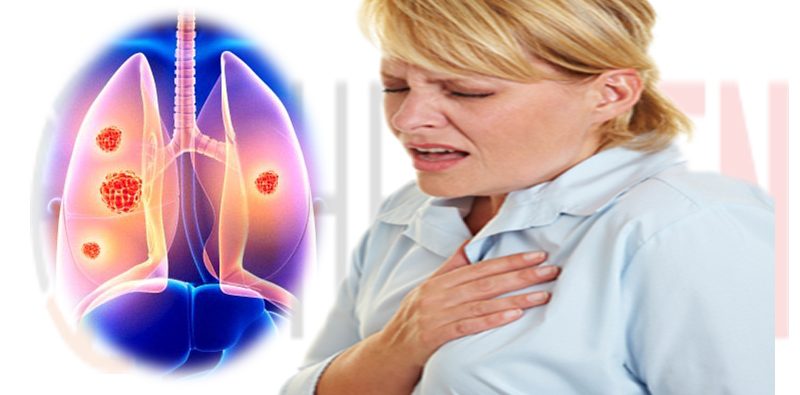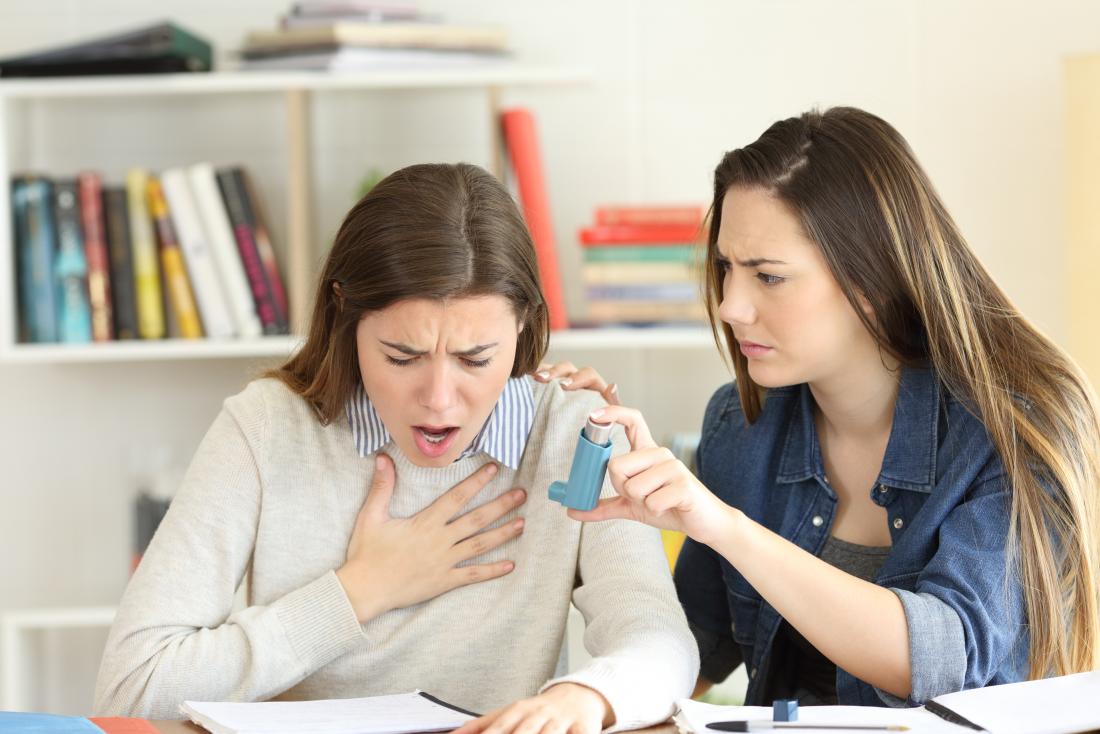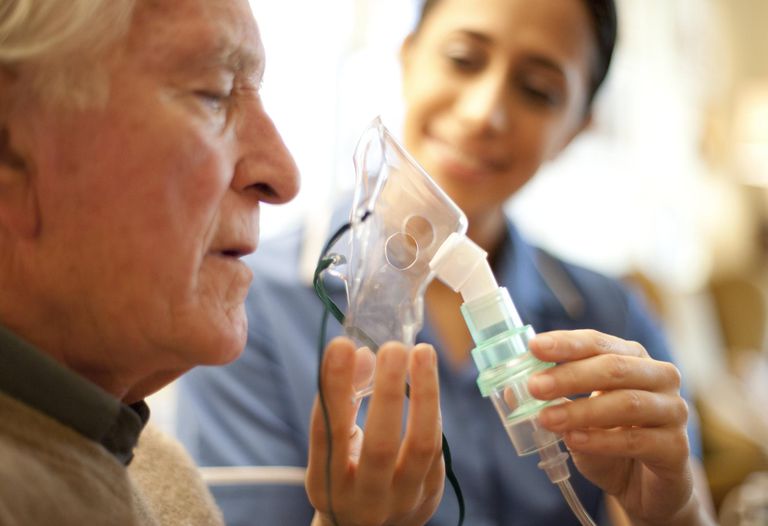Meta Description: Also called shortness of breath, dyspnea can be an alarming symptom. When it comes to labored breathing, many conditions can cause it. Unfortunately, it can be difficult to know whether you need medical attention. We created this guide for you to learn when it’s time to go to the ER for dyspnea.
Dyspnea: When Should You Go to the ER?
Dyspnea, also known as labored breathing, is alarming. This is especially true when you don’t know the reason behind it. Of course, if you just ran down a flight of stairs, you should expect some shortness of breath. If you’ve been working out or it’s particularly hot outside, then shortness of breath might be a given. For the most part, labored breathing doesn’t last for long. It is a temporary condition.
Still, like any medical problem, you have to be able to distinguish between a serious issue and something that does not need immediate care. Shortness of breath can be something incredibly benign or it can be severe. In this guide, we’ll help you pinpoint when dyspnea is an emergency situation.
It’s also important to keep in mind that despite some symptoms being clear signs of a serious ailment, not all signs will be as obvious. Everyone’s body reacts a little differently, and depending on what your medical history says there could be a number of differences between you and another patient suffering from the same condition.
If you have any questions about your symptoms, you should always consult your doctor.
What Is Dyspnea?
Dyspnea is a medical term for any type of shortness of breath. This ranges from temporary and long-lasting, severe labored breathing. Generally, overexertion and high altitudes cause dyspnea. Those with allergies may also experience shortness of breath in high-pollen areas. There are varieties of conditions that can cause it.
Dyspnea is a medical term for any type of shortness of breath. This ranges from temporary and long-lasting, severe labored breathing. Generally, overexertion and high altitudes cause dyspnea. Those with allergies may also experience shortness of breath in high-pollen areas. There are varieties of conditions that can cause it.
To help you understand the signs of dyspnea, here are the symptoms:
- Feeling short of breath
- Experiencing a suffocating feeling or like you’re being suffocated due to breathlessness
- Suffering from tightness in your chest
- Experiencing labored breathing
- Having rapid, shallow breaths
- Feeling heart palpitations
- Suffering from wheezing and coughing
Often when you are having trouble breathing you will feel it in your chest. Either this can be from the strain of trying to breathe or because there is an underlying heart problem. Until you can see a doctor, it might not be clear why you’re having these symptoms. Sometimes dyspnea isn’t as obvious as labored breathing, but the tightness in your chest and heart palpitations can alert you to the fact that you aren’t getting a lot of oxygen.
What Causes Dyspnea?
Dyspnea has several different causes. The first thing to note is that it isn’t always connected to how healthy a person is. After intense exercise or on a hot summer day, you might feel more out of breath than normal. If you are out of shape you will notice that you lose your breath easier. However, in these situations, you don’t need to worry about seeking medical attention. You can improve this simply by working out more often and increasing your stamina. Being out of breath is not always a medical emergency and you should not treat it that way. However, some more chronic conditions can lead to losing your breath.
For instance, here are some common illnesses that lead to dyspnea:
- Asthma
- Pneumonia
- COPD
- Heart failure
Obviously, some of these vary in how serious they are. However, each one of these can be potentially life threatening if not treated properly.
What you need to keep in mind is that there are two different types of shortness of breath. There are chronic cases, also known as chronic dyspnea, that last for over a month. Diseases that cause scarring in the lung tissue, asthma, heart problems, COPD and obesity are among the conditions that may cause chronic breathing problems. If you have a chronic issue with shortness of breath, then you should check with your doctor rather than suffering with the problem
On the other hand, dyspnea may come on suddenly. This is what doctors refer to as acute dyspnea. One of the reasons it comes unexpectedly for many people is that there are mental health issues that can cause this, such as anxiety. Anxiety can lead to chest tightness and shortness of breath. People who experience those symptoms for the first time are likely in for a surprise.
In addition, shortness of breath may come on quickly due to asthma, pneumonia, allergies, heart failure, or simply choking on food or a small object that blocks your breathing. For the most part you might be able to figure out what is causing your shortness of breath if it is acute. For instance, if you are choking, if you have lost a lot of blood or if you breathe in carbon monoxide, it may not be hard for you to decipher what is causing your loss of breath.
While many of these conditions might not be life threatening, many are. For instance, a blood clot to the lung causes shortness of breath and if not treated right away can be fatal. In addition, collapsed lungs and heart failure are all very serious conditions that you have to take care of right away.
Knowing what conditions can cause dyspnea might be helpful, but how do you know when it’s serious enough that you need to go to the hospital? This can be hard for some patients given all of the possible reasons behind shortness of breath. Most hospitals don’t want to risk taking valuable time away from other patients. So how do you know? We will help you figure out when it’s time to go to the ER.
Common Dyspnea Triggers
A part of understanding when shortness of breath is serious is knowing what might have caused it. A lot of us already know the triggers we have that might lead to problems breathing. Still, there may be environmental triggers that surprise you or that you develop over time.
First, let’s talk about people with asthma. When you have asthma you become accustomed to there being certain activities that are more difficult to accomplish without your inhaler. You understand that asthma attacks can occur, and that shortness of breath comes with the territory. As long as you have your inhaler and other treatment options, this usually isn’t a problem. Keep in mind, however, that asthma can be serious and life threatening in many instances. Now, when it comes to triggers, you may find that allergens, smoke and fragrances may cause an asthma attack or shortness of breath.
Now, those with asthma or even COPD are not the only ones who might end up triggered. If you have allergies, then odds are that certain allergens like pollen, dust and hay could cause shortness of breath. For some people an allergy to cats can even leave them short of breath. If you already know that you have allergies, then pinpointing the cause should be easy.
In addition, people exposed to chemicals, fumes and smoke may suffer shortness of breath even if they are otherwise healthy.
When To Go To the Emergency Room
While dyspnea is not always serious, it can be. Complications from shortness of breath can arise. Low blood pressure and loss of consciousness are two of the serious effects. If you lose your breath for long enough, temporary or permanent cognitive impairment can result.
So how do you know when it is time to see the doctor? More importantly, how do you know when to make an emergency room visit?
If the dyspnea is severe and has come on suddenly, it’s important to get medical treatment right away. If the shortness of breath so bad that you’re losing consciousness or the ability to function, then you should call 911 right away. In addition to severe symptoms, if you have chest pain or nausea you should visit the emergency room.
Now, just because you have these symptoms, it doesn’t mean that it’s necessarily life threatening. However, these symptoms are often associated with serious problems that can be. If you’re ever confused about whether or not to go to the emergency room, then it’s best to play it safe and go. It would be better to be sent home than to wait for it to become worse.
Other symptoms that could point to a serious medical problem are fevers, chills and a cough. If your limbs swell or if you cannot breathe while lying down, you may have an underlying condition that needs treatment. If you have to decrease your physical activity due to breathing problems over time, then you need to check with your doctor.
How Dyspnea Is Treated
At the hospital, doctors will give you a complete exam to diagnose you with dyspnea. Not only will they need to examine your physical symptoms, but you will have to be able to tell them when your symptoms began so that they can analyze your experiences. Once they have this information, you may have to have chest X-rays or a CT scan so that doctors can look for any underlying issue. Often, doctors will evaluate your heart, lungs and any system related to your breathing. In addition, you may have an ECG to see if a heart attack is the cause of your shortness of breath.
Some tests may assess your airflow and lung capacity. This is how doctors can tell how severe your breathing problems are. If you require further testing, a doctor may check the oxygen level in your blood.
Once diagnosed, the treatment is going to depend on the patient and problem at hand. In severe cases, you are going to need supplemental oxygen. This is especially true for patients who have COPD or asthma. Many of these patients also have rescue inhalers that they may need to use. For asthma, treatments like bronchodilators and steroids typically work best, whereas pneumonia responds better to antibiotics.
Other medications that may help with dyspnea are:
- Opiates
- NSAIDS (non-steroidal anti-inflammatory drugs)
- Anxiety medications
All of these medicines depend on the underlying cause of the shortness of breath. In addition, some treatment plans may not include medicine but learning new breathing techniques instead to strengthen lungs. When you go to the ER, it may treat the symptoms first before looking at the condition. For chronic ailments, you will probably have a longer treatment plan.
Dyspnea: Don’t Wait Until It’s Too Late
If you know for sure that your shortness of breath is not due to an underlying condition or that it is not immediately life threatening, then you may be able to save yourself the emergency room visit. Say that you just returned from a long run or moved your furniture on a hot day. You are going to be out of breath and tired afterward. Consider this when it comes to shortness of breath. If the cause is clear and you know that it will subside, then you can stay home.
However, keep in mind that any uncertainty shouldn’t be played around with. Don’t take chances with your life. If you are nauseous, foggy and slipping in and out of consciousness, then you need medical help right away. There are conditions that can be fatal if you don’t have them treated immediately. If you are having a pulmonary embolism or a heart attack, these are medical emergencies. Some of the symptoms may mirror other conditions.
Time matters in these situations. If you are not sure and if you are worried, then the best way to handle it is to go to the emergency room and let a doctor check you out. If you don’t feel like it is that imperative then you can also give your doctor a phone call to find out whether or not it’s appropriate for you to go to the hospital. You don’t want to email or contact them in any way that might leave you waiting too long for a reply. After all, when it is an emergency, you may not have a lot of time to waste.
Labored breathing is common to a variety of conditions. While it’s best not to panic in these situations, you also want to stay safe and make sure that you get the treatment you need. It’s always better to think of your health first.




Leave a Comment